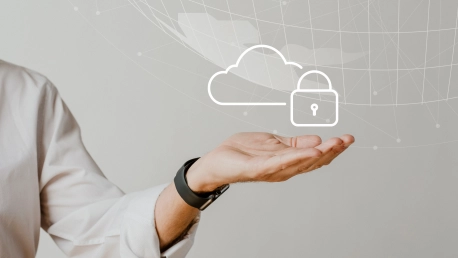In a world where data’s value rivals that of money, protecting digital assets is vital. Companies and individuals are constantly targeted by cyber threats, additionally facing the risk of hardware malfunctions and accidental deletions. Backup software plays an essential role in defending against these potential losses, providing a safety net for data integrity and business continuity.With the ever-changing digital environment, the need for effective backup solutions intensifies. Top-notch backup software provides multiple layers of protection, ensuring that data can be restored in the face of adversity. These tools are fundamental in maintaining data security by creating dependable duplicates that can be retrieved when original files are compromised.High-quality backup software not only guards against cyber incursions but also acts as an indispensable contingency plan for unforeseen disruptions. As reliance on digital information storage grows, so does the importance of backup systems. Leading software in this field rises to the challenge, offering comprehensive and reliable measures to shield users from data loss. Ensuring data remains intact despite threats, these advanced software solutions stand as guardians of the digital realm.
The Vital Role of Backup Software in Modern Data Security
The digital world’s expansion has embedded itself into the very fabric of everyday life, storing memories, personal details, and critical business operations. The loss of such data could lead to catastrophic outcomes, prompting the need for secure backup measures. Leading backup software today is not just a utility but a necessity—a barrier between chaos and continuity. These software applications understand the value of data and offer a variety of defensive strategies such as real-time protection, incremental backups, and fortified encryption to assure users that their virtual possessions are kept intact. It’s an unspoken assurance that’s reflected in the peace of mind of a user who knows their data is replicated, stored, and retrievable at any hour.Backup software also eases compliance burdens by ensuring that data retention policies are met. With advanced reporting features, organizations can demonstrate that they are protecting sensitive data in accordance with various regulatory standards. The confidence that backup software instills isn’t just in its ability to restore lost files; it’s also in the transparency and accountability it brings to data management practices.
Comprehensive Protection and User-Friendly Features
The spectrum of threats looming over digital data calls for a blend of intuitive usability and comprehensive protection. Acronis stands out, striking this balance with its user-friendly interface that doesn’t compromise on a suite of robust protective features. The software’s singular dashboard allows for easy navigation and management of backup operations. Acronis has built a reputation for offering automated, policy-driven backup solutions coupled with active protection capabilities against ransomware—elements that deliver a secure and simplified user experience.Equally vital is the assurance of data integrity. Backup software must possess the capability to restore data to its original state without corruption. Features like automated backup validation and encryption go a long way in ensuring this integrity, reinforcing the trust that users place in such applications. Automation, in particular, has transformed backup software from a reactive solution into a proactive one, where potential issues are resolved even before they escalate.
Disaster Recovery Integration and Cyber Protection
Delving deeper, it becomes evident that backup software transcends mere data copying mechanisms, embedding itself into broader IT strategies that include disaster recovery and cybersecurity. Holistic solutions, such as those offered by Veeam, embody this threefold approach. They not only back up data but also ensure that in the event of a breach or disaster, normal operations can resume with minimal downtime. Such integrations exemplify the evolution of backup software; from single-use utilities to complex, multi-dimensional defense structures offering layers of protective measures.This integration is especially significant considering the unpredictable nature of disasters and security incidents. Systems that can seamlessly transition from backup to disaster recovery modes are in high demand, offering organizations the ability to rally quickly after unexpected interruptions. Thus, the role of backup software extends beyond preservation, becoming an essential component in an organization’s resilience.
Pioneering Solutions for Diverse Backup Needs
The frontrunners in the backup software domain have carved niches reflective of their specialties. Acronis is revered for its comprehensive cyber protection, Veeam shines in virtualized environments, Commvault impresses with its wide-ranging data-management features, while Veritas Backup Exec caters to networks that blend physical and virtual assets. These pioneering solutions not only offer backups but also tailor their offerings to specific environments and user needs.Diversification in this field is key to addressing the varying scales and complexities of user requirements. Some vendors concentrate on speed and efficiency, others on compatibility and integration with existing IT infrastructures. This diversity is advantageous to users as they can select the backup software that aligns most closely with their specific operational environments and protection needs.
Embracing the Cloud: Modern Backup Alternatives
The surge of cloud computing has influenced the backup software landscape discernibly, with tools like Rubrik and Carbonite leading the pivot to cloud-based data protection. Rubrik, for instance, demonstrates how backup can be smartly integrated into hybrid and multi-cloud environments through its policy-driven framework. This illustrates an innovative shift towards tools that are not only backup solutions but also cogent data management systems. Meanwhile, Carbonite showcases the appeal of automated cloud backup, simplifying the process for users while providing robust online defense.These cloud-centric backup solutions emphasize flexibility and accessibility, key components for modern businesses that operate on a global scale. They provide options for both on-premises and remote backups, catering to the diverse needs of today’s increasingly mobile workforce and dispersed data portfolios. The cloud’s scalability dovetails perfectly with backup software, offering a solution that grows with an organization’s data needs.
Platform-Specific and Service-Based Backup Solutions
The industry also sees specialized services like Nakivo, which offers dedicated support for leading platforms such as VMware, Hyper-V, and AWS EC2. Tailoring backup solutions to the intricacies of specific platforms ensures that customers benefit from optimized performance and compatibility. Druva underscores the transition towards backup solutions offered as a service. This model, where backup becomes a managed service rather than a product, reflects an IT landscape moving resolutely towards service-oriented architecture.These platform-specific and service-based options underscore a trend where backup solutions are not only about data but also about delivering an experience that aligns with user preferences and operational methodologies. This transition to ‘Backup as a Service’ models demonstrates an understanding of the need for seamless integration of backup solutions into the broader IT service ecosystem.
Ensuring Business Continuity with Advanced Disaster Recovery
Addressing business continuity, software like Arcserve and Zerto offer sophisticated disaster recovery options. Arcserve’s Unified Data Protection (UDP) combines backup with high-availability tools to minimize downtime and maintain business operations. On the other hand, Zerto focuses on IT resilience with a solution that provides continuous data protection, allowing businesses to revert to any point in time should an incident occur—a marked difference from traditional periodic backup approaches.Advanced disaster recovery capabilities underscore an essential truth—that the real value of backup software is realized not during normal operations, but in moments of crisis. The ability to orchestrate rapid and efficient recovery is the cornerstone of resilience, revealing the depth of technology and innovation embedded in these solutions. The seamless automation and orchestration features that facilitate such quick turnarounds are becoming industry standards for top-tier backup software.
The Diverse Backup Market: Specialized Tools and Considerations
While the primary list boasts multifaceted backup solutions, the market also thrives on specialized tools. EaseUS ToDo Backup addresses the needs of individual users on a personal level with a user-friendly and efficient approach. In contrast, NovaBACKUP shines with its compliance-ready backups, providing a niche solution for healthcare providers seeking HIPAA-compliant data protection. This diversity in the backup software market ensures that there is a solution tailored to the specific needs, complexity, and regulatory requirements of every potential user.These specialized tools emphasize that the backup needs of users can be significantly varied. As data grows increasingly personal and tightly regulated, the ability of backup software to provide specific utility becomes more critical. The range of options available allows users to focus on what’s essential for their specific scenarios, be it the encryption strength, the support for a particular operating system, or compliance with industry regulations.
Critical Evaluation of Software Features and Pricing Models
Diverse backup solutions come with a variety of pricing models and differing feature sets. Users are tasked with the challenge of identifying the software that best fits their requirements. Some solutions are priced per device, others per user, or based on the volume of data being protected. Understanding the unique advantages each software offers, whether it’s superior support, ease of use, breadth of features, or cost efficiency, is key to making the right choice.The critical aspect of evaluating backup software goes beyond the immediate financial cost. It involves careful consideration of the value it brings relative to the particular needs of an individual or organization—be it scalability, ease of migration, or advanced security measures. The overarching objective remains unwavering—to provide secure, efficient, and recoverable data backup services that align with the user’s priorities.
Choosing the Right Backup Software for Your Needs
Selecting the right backup software can be a daunting task, given the multitude of options available. It requires a harmonious match between user-specific requirements, operational needs, budget allowances, and technical proficiency. Factors such as scalability, support quality, user interface simplicity, and the breadth of features offered must all be weighed carefully. Users must strike a balance, ensuring that their chosen solution can not only handle the current data load but will also grow alongside their future data protection needs.Ultimately, the right backup software is the one that seamlessly integrates into existing workflows, provides peace of mind through reliable protection measures, and contributes to organizational resilience. It’s about finding a solution that makes data backup and recovery a seamlessly managed aspect of the digital ecosystem. It is this cohesion that empowers users and organizations to leverage the full potential of their data, confident in the knowledge that they are protecting what is invaluable in the digital realm—information.









